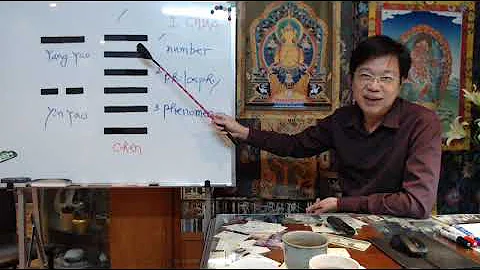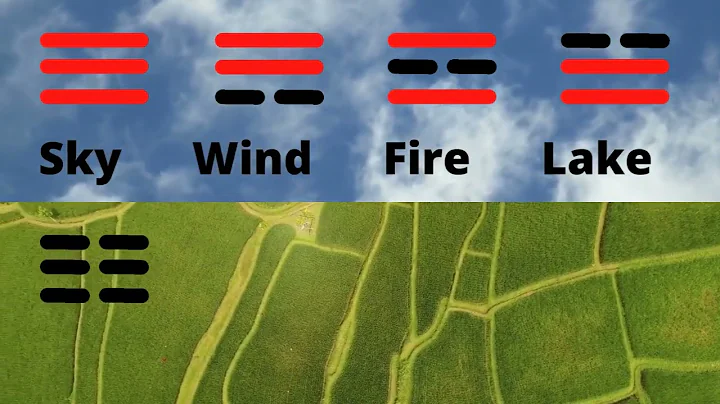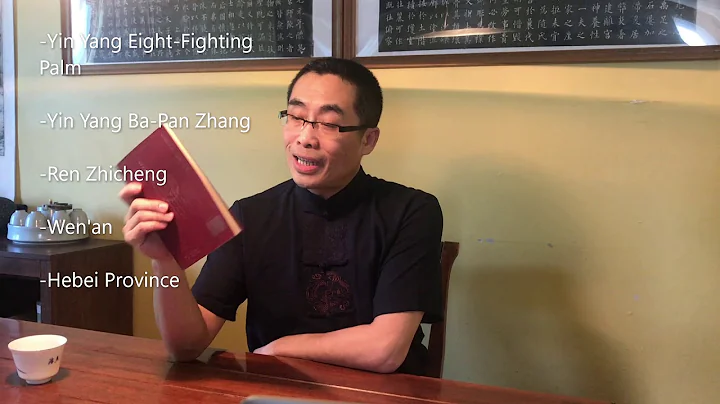Bagua is the basic concept of "Book of Changes". It can represent the dynamic and static states of all natural phenomena. Each hexagram is composed of three lines. "Gua" means "hanging", which also means that various phenomena are marked up in one of the eight hexagrams for easy observation. For example, the phenomenon of "Heaven" is known as "hanging" in the hexagram "Qian". That is, the stem is the hexagram and the sky is the image. A hexagram can be attached to many, many phenomena, but it is not arbitrary and has specific rules. Every phenomenon can be linked to a hexagram, and it is not arbitrary. There are images first, then hexagrams. Everything is included in the Bagua, and the Bagua hangs everything. Using Bagua as a model for all phenomena, studying and understanding the Bagua model will help to understand all phenomena.

The emergence of I Ching Bagua can be traced back to Hetu and Luoshu , as well as Tai Chi . Tai Chi generates two rituals, two rituals generate four images , four elephants generate Bagua, Bagua determines good and bad luck, and good and bad luck generates great causes.
The item combination of Bagua can represent various natural phenomena or dynamics, namely "Heaven, Earth, Water, Fire, Thunder, Wind, Mountain, and Ze" (which can be called the first eight images, because Bagua can be said to be the first hexagram in These eight phenomena that are easiest for people to see), the hexagram names are called "Qian, Kun, Kan, Li, Zhen, Xun, Gen, Dui". The Bagua in the Book of Changes represents ancient Chinese cultural thoughts such as astronomy, geography, philosophy, etc. Its theory also involves literature, martial arts, Chinese music, etc.

If the eight trigrams are combined in pairs, sixty-four hexagrams are formed. Originally, the eight trigrams (three lines) are also called eight "single hexagrams", while the combination of two trigrams (six lines) is called "double hexagrams".
Fu Xi painted the Eight Diagrams, King Wen of Zhou made the hexagrams, Duke Zhou made the line words, Confucius made the ten wings.
"Yao" is the most basic symbol, which means interlacing, and is represented by odd paintings ("⚊" is called Yang Yao) or odd paintings ("⚋" is called Yin Yao).
The Yao has two forms, Yin and Yang. If the two are overlapping, they form four images (sun, shaoyin, shaoyang, taiyin). Adding another line to the four images forms Bagua.
lines are arranged from bottom to top. The meaning of the "three" lines symbolizes "heaven, man and earth" (there is heaven above, earth below, and humans in it).
consists of three lines forming a single hexagram (jing hexagram).
Bagua means eight single hexagrams (eight sutra hexagrams).

八个“单卦”(经卦)
符号 | 卦名 | 自然象征 | ||||||||||||||||||||||
☰ | 乾qián | 天 | ||||||||||||||||||||||
☱ 兑duì 泽 ☲ 离lí 火 ☳ 震zhèn 雷 ☴ 巽xùn 风 ☵ 美kǎn 水 | ☶ | gengèn | 山 | |||||||||||||||||||||
☷
kunkūn
地
Each hexagram represents a state or process.
Song Dynasty Zhu Xi wrote a "Bagua Xiang Song" in "The Original Meaning of the Book of Changes" to help people remember the hexagrams of the Bagua:
- Qian Sanlian (☰), Kun Liudu (☷);
- Zhenyang Yu ( ☳), Gen covers the bowl (☶);
- is empty in the middle (☲), full in the ridge (☵);
- is missing in the upper part (☱), and broken in the lower part of the sun (☴).
When recited, it can correspond to the "Xiantian Bagua Diagram": from (Qian) top to bottom, from (Kun) left to right up.

The hexagram
- Qian is the sky: Yuanheng, Li Zhen.
- Kun is the ground: Yuanheng, the chastity of the female horse. When a gentleman wants to go somewhere, he will be lost first and then win. He will gain friends from the southwest and lose friends from the northeast. Anzhen, Ji.
- Kan is water: learn from Kan, be prosperous, maintain your heart, and behave well.
- Li is fire: Li Zhen, Heng. Livestock: cow, auspicious.
- was shocked by thunder: Heng. The shock came to me, and I was speechless with laughter. Shocked for hundreds of miles, I will never lose my dagger.
- Gen is a mountain: if you Gen is on your back, you won’t get your body; if you walk in the courtyard, you won’t see its person, there is no blame.
- Xunwei Feng: Xiaoheng, profit and gain, meeting adults.
- corresponds to Ze: Heng, Li Zhen.
Sixty-four hexagrams can be evolved from the eight trigrams. Two hexagrams overlap (complex hexagrams) to form the eighty-eight-sixty-four hexagrams.
Sixty-four hexagrams, which means sixty-four heavy hexagrams (sixty-four individual hexagrams). That is to say, eight "single hexagrams" (jing hexagrams) are intertwined like warp and weft to form sixty-four "heavy hexagrams" (different hexagrams).
The lower single hexagrams are called "inner hexagrams", and the upper single hexagrams are called "outer hexagrams".

Song Dynasty scholar Shao Yong believes that the four images play the eight trigrams (directions), and the eight eight generates the sixty-four hexagrams . This is the Fuxi Bagua , also called the innate Bagua; some scholars believe that the Bagua should come from King Wen of Zhou Qiankun theory, he believed that there was heaven and earth first, and the intersection of heaven and earth created all things. Heaven is Qian, earth is Kun, and the other six hexagrams of the Eight Diagrams are their children: Zhen is the eldest boy, Kan is the middle boy, Gen is the young boy; As the eldest daughter, Li as the middle daughter and Dui as the young girl, this is King Wen's Bagua, also known as the Houtian Bagua. Shao Yong did not distinguish between innate Bagua and acquired Bagua before.





















